Numerous roads traverse the Western and Eastern Ghats on the subcontinent of India. The roads that cut through these mountain ranges are marvelous feats of engineering, many of which date back to the British Raj, the time when Great Britain ruled India from 1858 to 1947. However, none can compare to the splendor of the Kolli Hills Road in the Eastern Ghats.
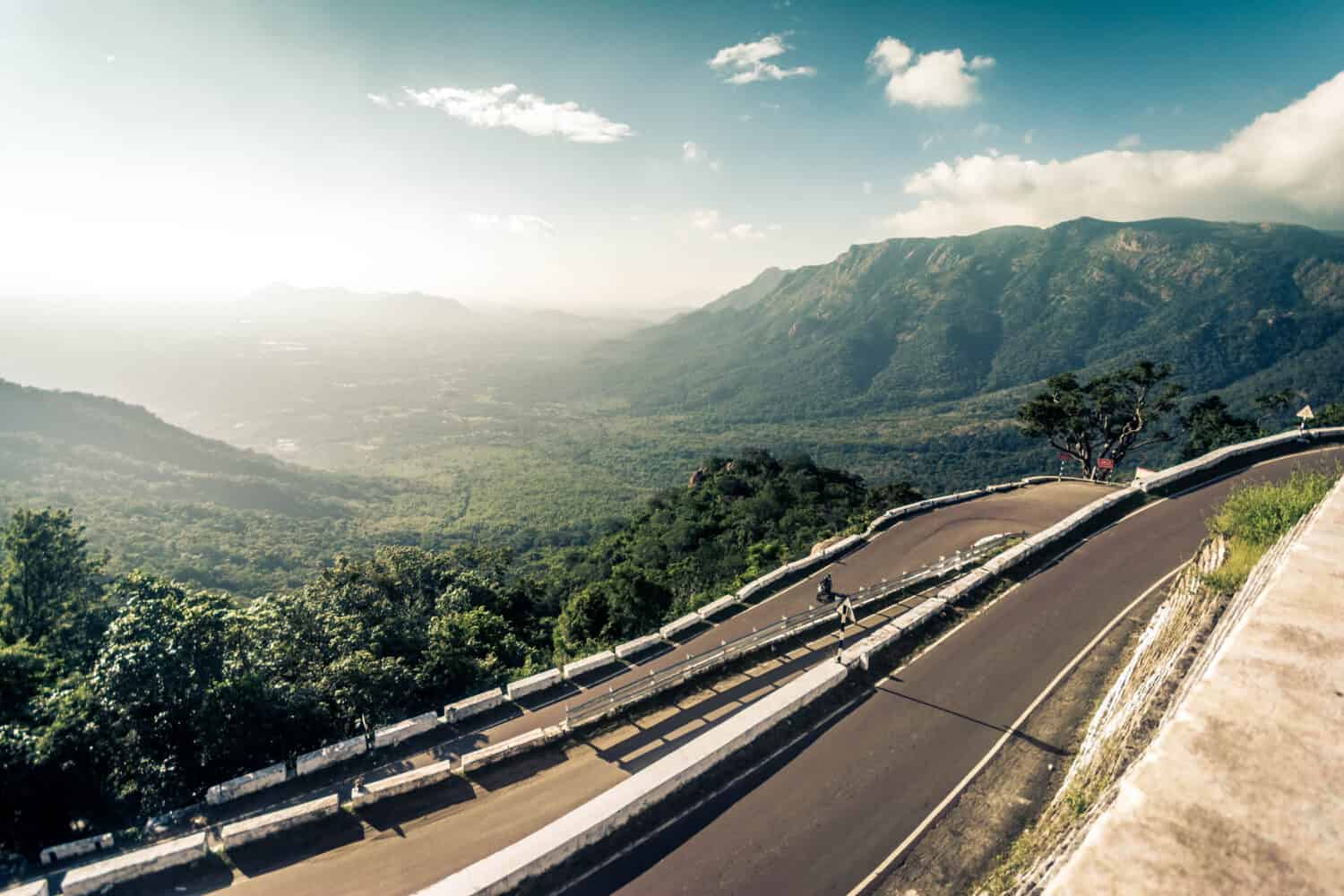
The Kolli Hills Road in the Eastern Ghats is a lifetime journey!
©shutterlk/Shutterstock.com
The Kolli Hills Road (or Kollimalai Ghat Road)
Kolli Hills Road (officially Road MDR181) is a road that climbs through the Kolli Hills (or Kolli Malai), part of the Eastern Ghats. The Kolli Hills are found in the Namakkal District of the South Indian state of Tamil Nadu.
The road begins at Karavalli and climbs to Solakkadu, a trek of around 31 miles. The road’s average gradient is 4.7%. It features a total elevation gain of 3,150 feet. The temperature drops as travelers gain altitude, providing a welcome escape from the tropical heat. However, Kolli Hills Road’s biggest claim to fame is its turns.
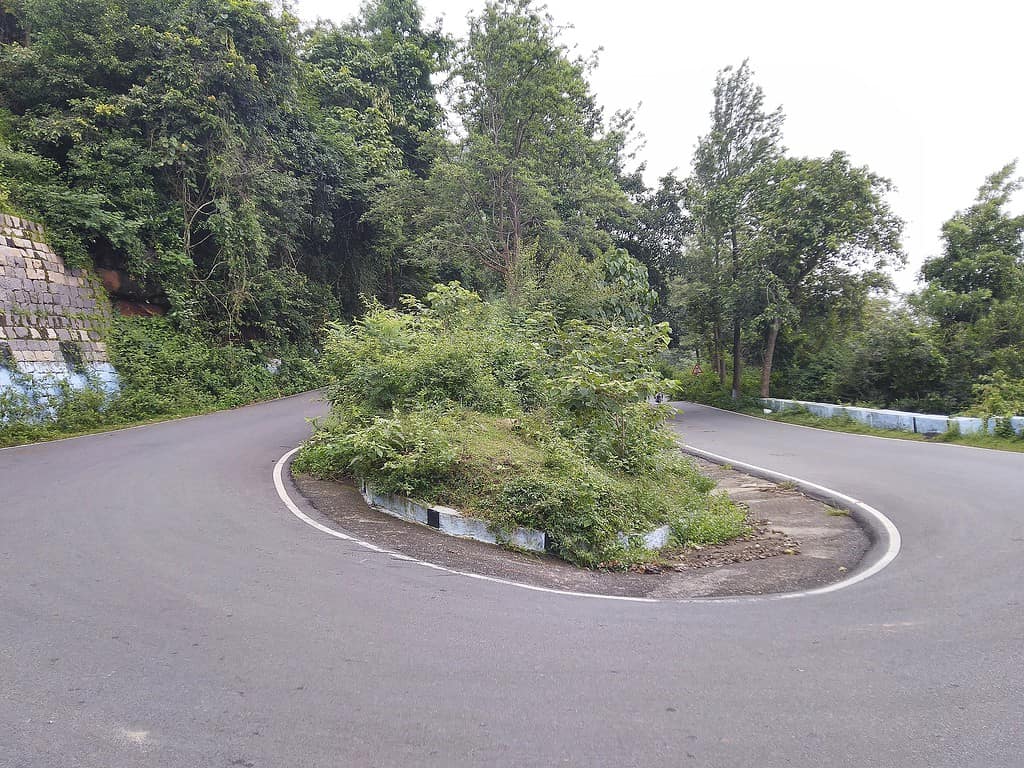
The road is famous for its 70 hairpin turns.
©Chinchu.c / CC BY 4.0 – License
Hairpin Turns
The road features 70 hairpin turns that are packed into a stretch of approximately 19 miles. The switchback curves are practically continuous, with a turn every 600-700 feet. These 180° bends have made the mountain road a dream destination for motorcyclists. Many bikers salivate at the thought of so many switchback turns in such a short distance. Each of the 70 hairpin turns is numbered with a stone marker, letting drivers and riders know how far they’ve come and how far they still have to go.
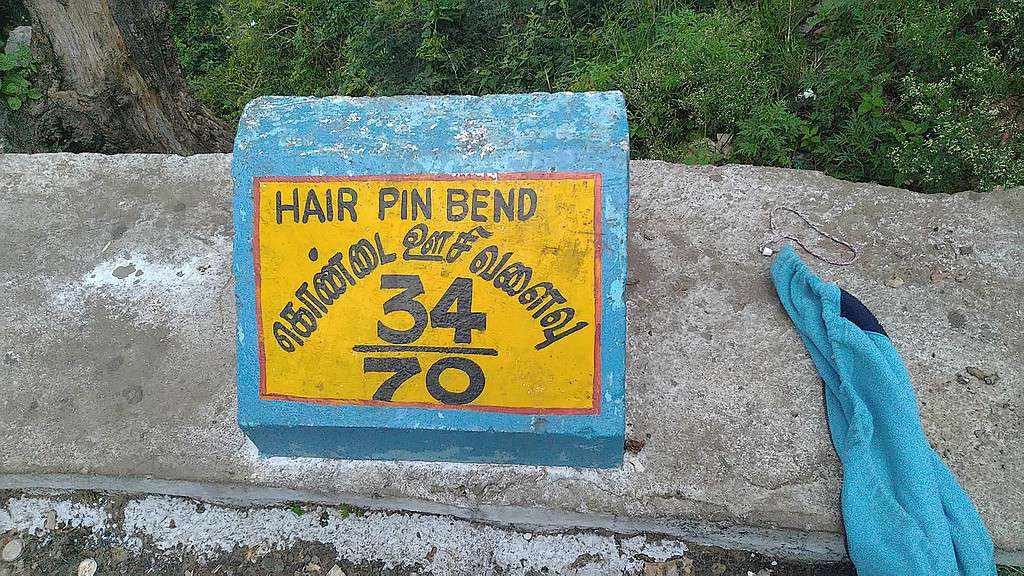
Each hairpin turn features a numbered marker along the Kolli Hills Road.
©Chinchu.c / CC BY 4.0 – License
The views during the climb are breathtaking, but drivers can’t afford to appreciate the scenery while navigating this endlessly winding road. Taking your eyes off the road, even for a second, can have dangerous consequences. However, there are some viewpoints where drivers can stop to take in the sights and snap some pictures. The five major vantage points are Selur, Sirumalai, Binnam, Seeku Parai, and Valappurnadu. These stops offer panoramic views of the lush, green tropical forests that cover the hills and valleys of the region.
What is it like to travel this road? The video below details the hairpin turns of the road, along with aerial shots that reveal the road’s windy, meandering route up the mountainside.
Safety on the Kolli Hills Road
Even with its 70 hairpin turns, the Kolli Hills Road is relatively safe, at least compared to other ghat roads. The road is paved (although the quality of the pavement is not always the best), and there are protective barriers along the edge. Still, the trek is steep, windy, and potentially hazardous. Navigating the road at night or in inclement weather significantly increases the risk and should be avoided by drivers unfamiliar with the roadway.
It is a two-way road, with travelers ascending and descending the mountain. The hairpin bends are very narrow, only allowing one vehicle at a time. That is especially true after the thirtieth bend. From that point on, the road begins to grow narrower, the turns are sharper, and the grade is steeper.
Despite the narrow road and switchback turns, the road is frequented by trucks and buses. Drivers and motorcycle riders must constantly look and listen for approaching large vehicles. Truckers and bus drivers often blast their horns as they approach the sharp bends to alert other drivers and motorcyclists of their presence.
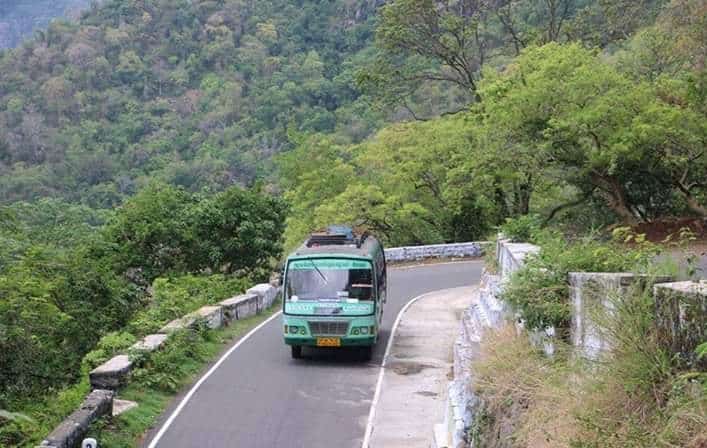
Trucks and buses frequent this narrow, windy mountain road.
©Shino jacob koottanad / CC BY-SA 4.0 – License
Kolli Malai
The Kolli Hills are also known as Kolli Malai, which translates to “Mountains of Death.” That grim moniker is not due to the dangerous road with its 70 hairpin turns, though.
The name comes from a local goddess named Ettukai Amman, also known as Kollippavai. The image of Kollippavai was said to be a beautiful maiden who would entice travelers with her loveliness but then would kill them.
Another legend says that sages went to these hills to mediate and undertake penance. While they were in the midst of these rituals, demons invaded the hills. They prayed to Kollippavai, who chased away the demons with her alluring smile.
These hills are still sacred to local worshipers today.
Other Sites in Kolli Hills
While the Kolli Hills Road is a destination itself, it also transports travelers to some wondrous places. Kolli Hills is home to various hiking trails, two ancient temples, and multiple waterfalls. Here are a few of the must-see sites.
Arapaleeswarar Temple
This ancient Shiva temple is a pilgrimage destination in South India. The temple was built sometime during the Sangam Age, which lasted from the third century BC to the third century AD.
Local folklore claims the Shiva Lingam that is enshrined in the temple was found by a farmer. As he was plowing, he hit something under the soil, and blood started emerging from the ground. He dug up the Shiva Lingam. It is said that the wound is still visible to this day.
Legend also says that a fisherman once caught some fish from the Panchanathi River. As he was cooking the fish, they came back to life and jumped back into the river. It is said that the Lord Shiva resurrected the fish. Today, it is customary for devotees to feed the fish of the river before entering the temple.
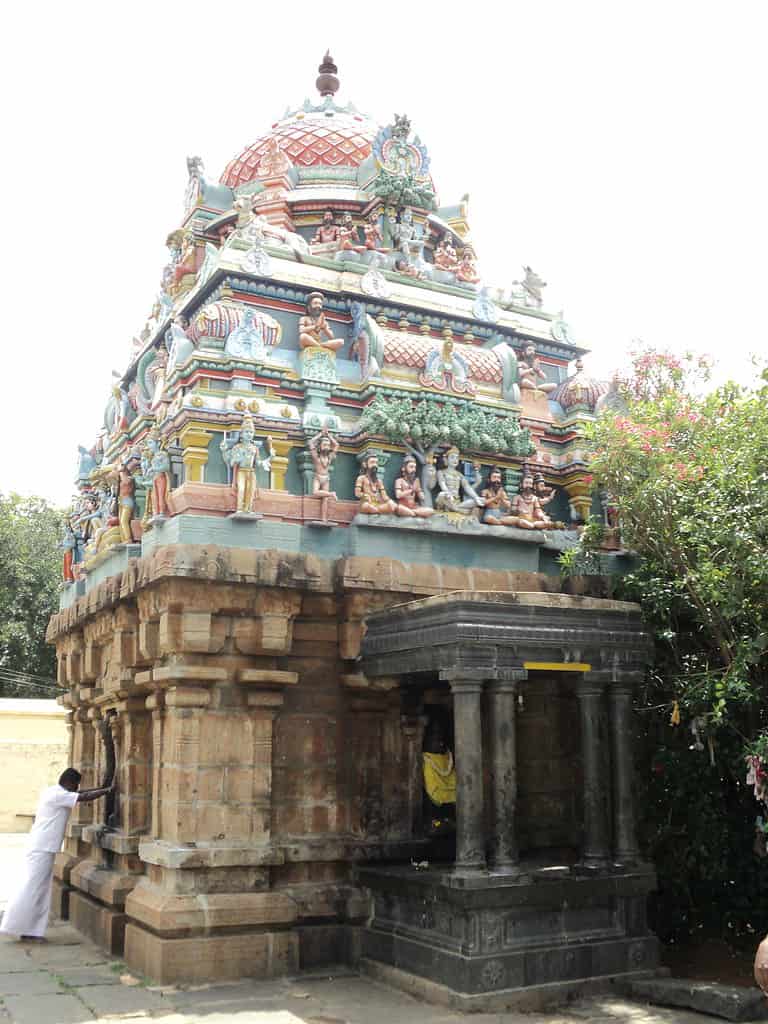
The Arapaleeswarar Temple is sacred to the local population.
©Rajeshodayanchal / CC BY 3.0 – License
Agaya Gangai Falls
This 300-foot waterfall is located about half a mile from the Arapaleeswarar Temple. The waterfall is a series of cascades down a rocky precipice. Visitors can stand directly under the falls, allowing the water to wash over them.
The falls are accessible by descending 1,196 steps. The stairway is steep and narrow. Visitors must remember that, after enjoying the falls, they will have to climb the same steps to exit the area. Anyone who is in poor physical condition should not descend to the falls area. The climb is significant even for those in moderately good condition. Thankfully, there are spots to stop and catch your breath along the way.

Agaya Gangai Falls is accessible to visitors, but they have to navigate almost 1,200 stairs.
©Ramsankar Dinesh/Shutterstock.com
Siddhar Caves
These caves are near the Agaya Gangai Falls. Centuries ago, sages purportedly lived in these caves, where they perfected herbal medicines. Some of the herbs can still be found growing around the caves today.
The caves are not heavily traveled, so they make for a serene stop in your exploration of Kolli Hills. Be aware that some of the caves are quite narrow, allowing only one or two people at a time.
Wildlife of Kolli Hills
The fauna of Kolli Hills is another feature that makes the area such a special place. Visitors may encounter any number of animals, including slender lorises, Indian pangolins, sloth bears, barking deer, mongooses, palm civets, and jackals.
The hills are also home to numerous snake species, including the Rajendran’s shieldtail and the Gower’s shieldtail snakes. These snakes are only known to exist in this region of the Eastern Ghats. Lizards and geckos specific to the region are also found in these hills.
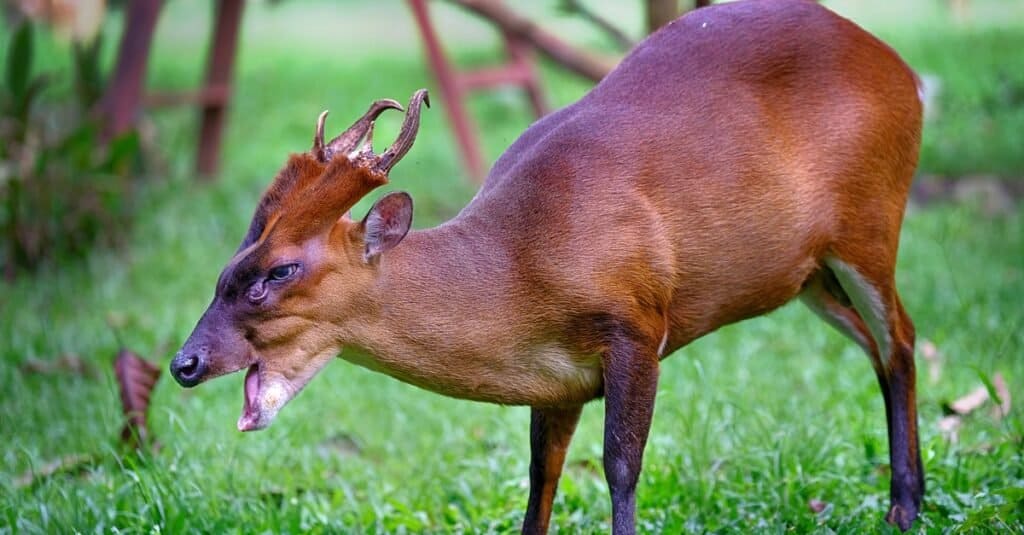
The barking deer, also known as the Indian muntjac, lives in the Kolli Hills region.
©PLOO Galary/Shutterstock.com
Farming and Food
The lush mountain forests also provide fertile soil for farming. Some of the foods and spices grown in the Kolli Hills region include jackfruit, pineapples, oranges, bananas, black pepper, and tapioca.
Jackfruit soaked in wild honey gathered in these mountains is a local favorite. It is something all travelers should sample when visiting Kolli Hills.
The photo featured at the top of this post is © SurangaLK/Shutterstock.com
Thank you for reading! Have some feedback for us? Contact the AZ Animals editorial team.






